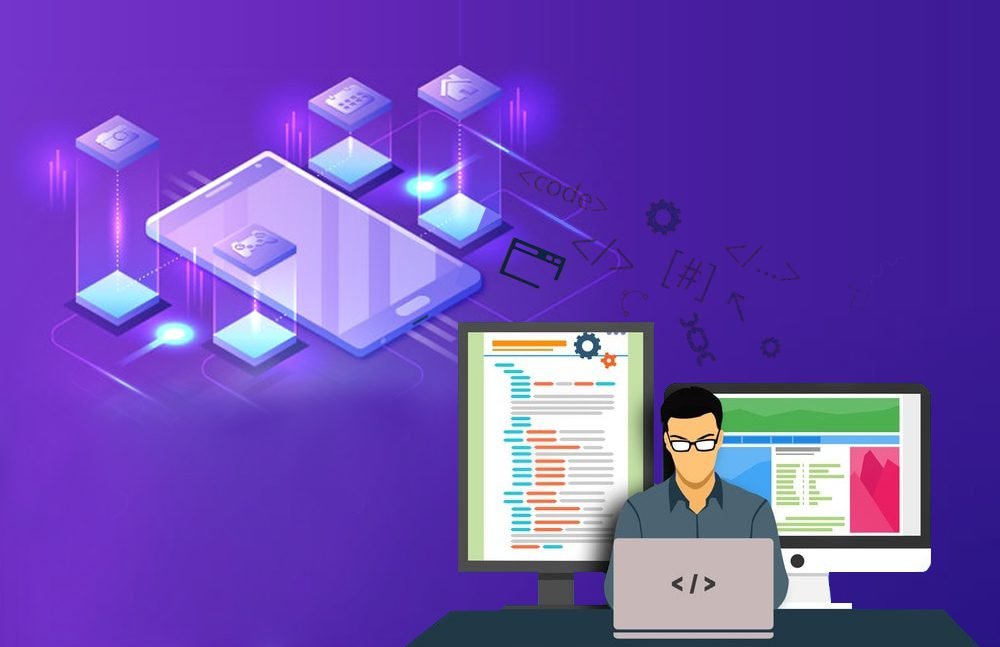Who Is a Full Stack Developer?
From the early days of software development, each developer is defined by the sector he works in. So, in that sense, a developer who works on the back-end is a back-end developer, and a developer who deals with the front-end is a front-end developer.
There are a considerable number of professionals working in this career field. This article helps you understand who is a full stack developer and how they differ from traditional developers.
What do Full Stack Web Developers do?
A full-stack web developer is someone who has experience writing both client-side and server-side code. They are proficient in HTML and CSS, as well as programming for servers, databases, and browsers.
The front end and back end of web development must be understood in order to fully appreciate the responsibilities of a full-stack developer.
The user interacts with the application's front end, which is the visible portion, while the back end houses the business logic.
Front-end and Back-end Developers
A front-end developer's responsibility is to build the user interface and the user-experience architecture of a software or website.
They have to work with the designers to create and improve the UI/UX of software. An experienced front-end developer can precisely recognise every possible issue that might affect the user experience. He can also provide suggestions and coding solutions to make the design more attractive.
The back-end developers, on the other hand, handle the server and data side of the project. It is they who build the application and design its interactions with the server and database. They have to manipulate data and work with private and public APIs.
A qualified back-end developer would have great expertise in Linux/Windows as a development and deployment system. Insights on various version control systems such as GIT/SVN are also a requirement for this job.
What abilities do full-stack developers need?
A Full Stack developer ought to be knowledgeable about:
- Basic languages - HTML, CSS, and SQL are examples of basic languages that must be mastered.
- Front-end frameworks: JavaScript, TypeScript, AngularJS, VueJS, ReactJS, Python, Ruby, and PHP
- Back-end frameworks: Ruby on Rails, Django, Express, and NodeJS
- Various databases, including MySQL, SQLite, Postgres, MongoDB, Cassandra, Apache Storm, and Sphinx
Git, machine learning, SSH, Linux command, data structures, and character encoding are additional abilities that are advised.
The Rise of Full Stack Developers
The front-end and back-end developers are specialised positions among developers. However, as customer requirements evolved with time and became more complex, a team of engineers started to create helper libraries and frameworks for the software development process.
One of the most common examples of such a library is jQuery. This library made JavaScript development in browsers much easier and feasible. Some other popular examples are AngularJs, Knockout, Backbone, and EmberJs. Similar progress was happening in the back-end technologies as well. This sector introduced popular frameworks Zend, Symfony, CakePHP for PHP, and CodeIgnitor for Ruby on Rails.
With such advancement emerged a new category of developers, the full stack developers. This new set of developers blurred the lines between back-end and front-end developers. One of the crucial factors behind the popularisation of this role was the rise of startups. These jack-of-all-trades developers can provide a full package and work cross-functionally on the entire technology stack of the organisation. Both developers and companies benefit from this arrangement.
If this career interests you, join a Full-stack developer course and acquire the skills required for this job. As a full-stack developer, you will be expected to have a fair amount of proficiency in technologies such as HTML5, CSS3, Python, Ruby, MySQL, MongoDB, etc. A full stack developer course will help you make this process faster, but it is also important to have some practical experience in them before entering the industry.
What are the latest trends in full-stack development?
(AR+VR) Mixed reality low-level programming. language fashions. Web apps that are progressive.










